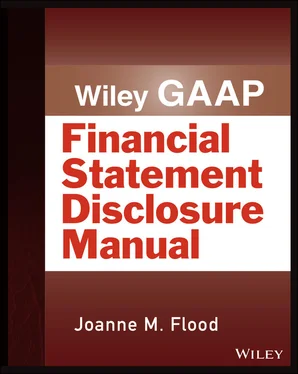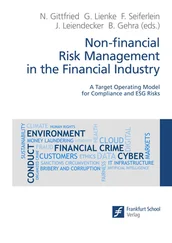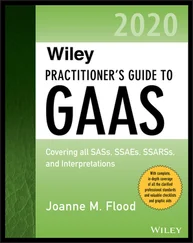Revenue is recognized when performance obligations are satisfied through the transfer of control of promised goods to the Company's customers. Control transfers once a customer has the ability to direct the use of, and obtain substantially all of the benefits from, the product. This includes the transfer of legal title, physical possession, the risks and rewards of ownership, and customer acceptance. Revenue from company‐operated stores and other retail locations is recognized at the point of sale. Direct to consumer revenue and sales to wholesale accounts are recognized upon receipt by the customer. In certain arrangements the Company receives payment before the customer receives the promised good. These payments are initially recorded as deferred revenue, and recognized as revenue in the period when control is transferred to the customer.
Revenue is presented net of an allowance for estimated returns, which is based on historic experience. The Company's liability for sales return refunds is recognized within other current liabilities, and an asset for the value of inventory which is expected to be returned is recognized within other prepaid expenses and other current assets on the consolidated balance sheets.
Shipping fees billed to customers are recorded as revenue, and shipping costs are recognized within selling, general, and administrative expenses in the same period the related revenue is recognized.
Proceeds from the sale of gift cards are initially deferred and recognized within unredeemed gift card liability on the consolidated balance sheets, and are recognized as revenue when tendered for payment. Based on historical experience, and to the extent there is no requirement to remit unclaimed card balances to government agencies, an estimate of the gift card balances that will never be redeemed is recognized as revenue in proportion to gift cards which have been redeemed.
While the Company will continue to honor all gift cards presented for payment, management may determine the likelihood of redemption to be remote for certain card balances due to, among other things, long periods of inactivity. In these circumstances, to the extent management determines there is no requirement for remitting card balances to government agencies under unclaimed property laws, the portion of card balances not expected to be redeemed are recognized in net revenue in proportion to the gift cards which have been redeemed, under the redemption recognition method.
Recent Accounting Pronouncements
Example 7.47: Recent Accounting PronouncementsIn February 2016, the FASB issued ASU No. 2016‐02, Leases (Topic 842) (ASU 2016‐2) that revises accounting for operating leases by a lessee, among other changes, and requires a lessee to recognize a liability to make lease payments and an asset representing its right to use the underlying asset for the lease term in the balance sheet. This update will be effective for nonpublic business entities for fiscal years beginning after December 15, 2020, including interim periods within those fiscal years. In July 2018, the FASB issued ASU 2018‐10, Codification Improvements to Topic 842, Leases , to clarify how to apply certain aspects of the new leases standard. The amendments address the rate implicit in the lease, impairment of the net investment in the lease, lessee reassessment of lease classification, lessor reassessment of lease term and purchase options, variable payments that depend on an index or rate and certain transition adjustments, among other issues. In addition, in July 2018, the FASB issued ASU 2018‐11, Leases (Topic 842): Targeted Improvements, which provides an additional (and optional) transition method to adopt the new leases standard. Under the new transition method, a reporting entity would initially apply the new lease requirements at the effective date and recognize a cumulative‐effect adjustment to the opening balance of retained earnings in the period of adoption, continue to report comparative periods presented in the financial statements in the period of adoption in accordance with current U.S. GAAP (i.e., ASC 840, Leases ) and provide the required disclosures under ASC 840 for all periods presented under current U.S. GAAP. A modified retrospective transition approach is required for lessees for capital and operating leases existing at, or entered into after, the beginning of the earliest comparative period presented in the financial statements, with certain practical expedients available. The Company plans to adopt these new guidance in the first quarter of fiscal year 2010 and is still evaluating the effect that this guidance will have on the Company's financial statements and related disclosures.
In July 2017, the FASB issued ASU 2017‐11, Earnings Per Share (Topic 260); Distinguishing Liabilities from Equity (Topic 480); Derivatives and Hedging (Topic 815) . The amendments in Part I of this Update change the classification analysis of certain equity‐linked financial instruments (or embedded features) with down‐round features. When determining whether certain financial instruments should be classified as liabilities or equity instruments, a down‐round feature no longer precludes equity classification when assessing whether the instrument is indexed to an entity's own stock. The amendments also clarify existing disclosure requirements for equity‐classified instruments. The amendments in Part II of this Update recharacterize the indefinite deferral of certain provisions of Topic 480 that now are presented as pending content in the Codification, to a scope exception. Those amendments do not have an accounting effect. For public business entities, the amendments in Part I of this Update are effective for fiscal years, and interim periods within those fiscal years, beginning after December 15, 2018. Early adoption is permitted for all entities, including adoption in an interim period. If an entity early adopts the amendments in an interim period, any adjustments should be reflected as of the beginning of the fiscal year that includes that interim period. The Company does not expect that the adoption of this guidance will have a material impact on its consolidated financial statements.
In March 2018, the FASB issued ASU 2018‐05, Income Taxes (Topic 740): Amendments to SEC Paragraphs Pursuant to SEC Staff Accounting Bulletin No. 118 (“ASU 2018‐05”), which amends the FASB Accounting Standards Codification and XBRL Taxonomy based on the Tax Cuts and Jobs Act (the “Act”) that was signed into law on December 22, 2017 and Staff Accounting Bulletin No. 118 (“SAB 118”) that was released by the Securities and Exchange Commission. The Act changes numerous provisions that impact U.S. corporate tax rates, business‐related exclusions, and deductions and credits, and may additionally have international tax consequences for many companies that operate internationally. The Company has evaluated the impact of the Act as well as the guidance of SAB 118 and incorporated the changes into the determination of a reasonable estimate of its deferred tax liability and appropriate disclosures in the notes to its consolidated financial statements (see Note 9).
In June 2018, the FASB issued ASU 2018‐07, Compensation‐Stock Compensation (Topic 718): Improvements to Nonemployee Share‐Based Payment Accounting . The guidance largely aligns the accounting for share‐based payment awards issued to employees and nonemployees, whereby the existing employee guidance will apply to nonemployee share‐based transactions (as long as the transaction is not effectively a form of financing), with the exception of specific guidance related to the attribution of compensation cost. The cost of nonemployee awards will continue to be recorded as if the grantor had paid cash for the goods or services. In addition, the contractual term will be able to be used in lieu of an expected term in the option‐pricing model for nonemployee awards. The ASU is effective for fiscal years beginning after December 15, 2020, including interim periods within that fiscal year. The ASU is required to be applied on a prospective basis to all new awards granted after the date of adoption. The Company is still evaluating the effect that this guidance but does not expect the standard to have a material impact on its consolidated financial statements.
Читать дальше












